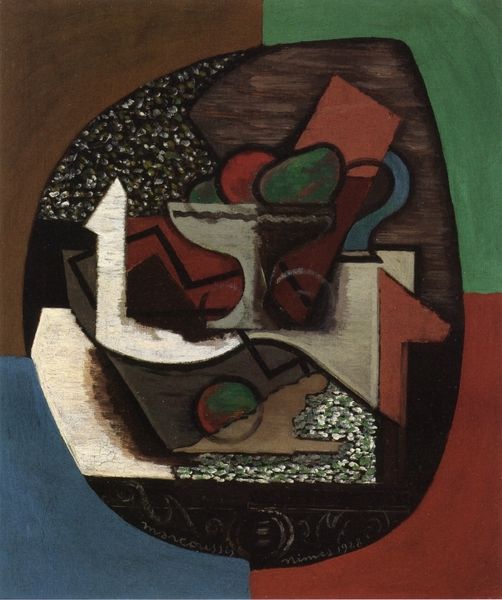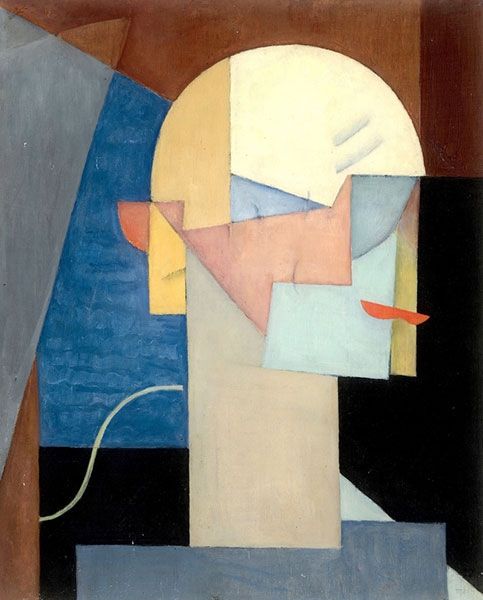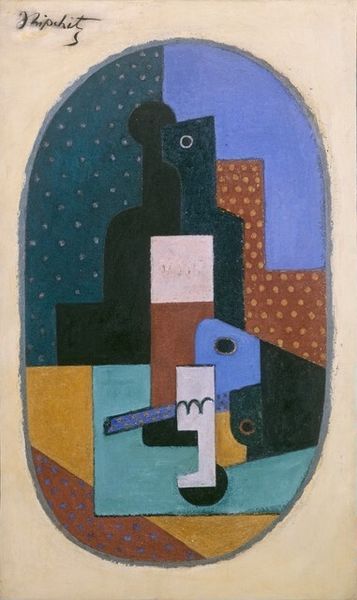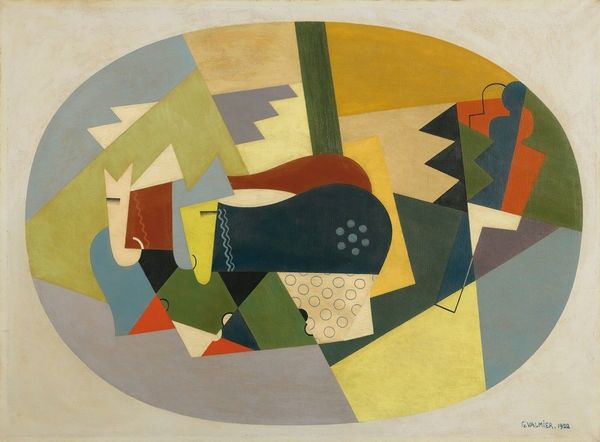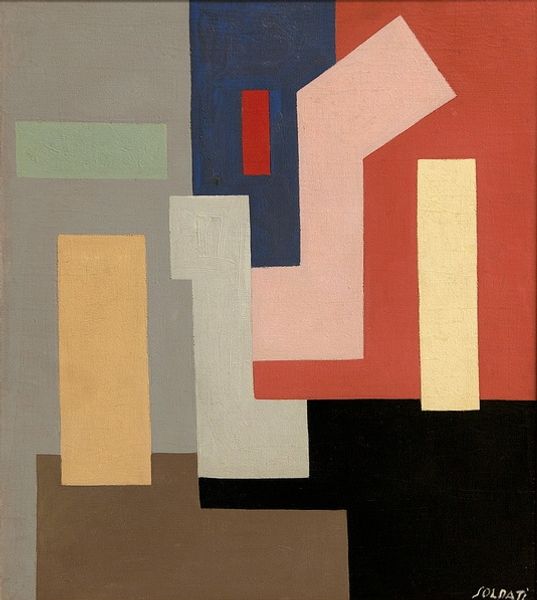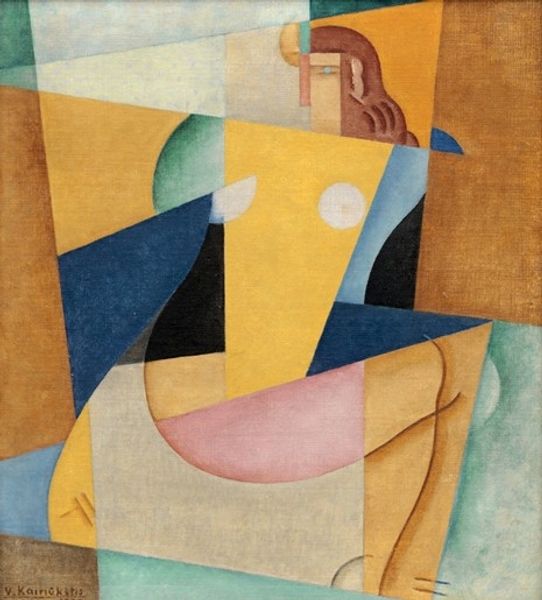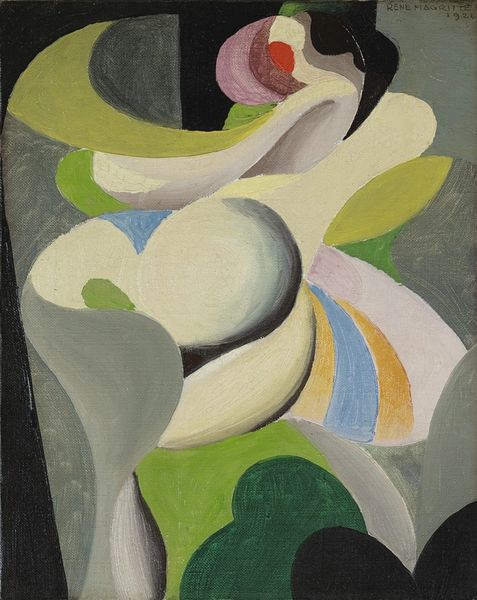
painting, oil-paint
#
cubism
#
painting
#
oil-paint
#
oil painting
#
geometric
Copyright: Public domain US
Editor: We're looking at "Composition with a Vase from Vieux-Strasbourg," an oil painting from 1921 by Gustave Buchet. It's an interesting arrangement of geometric forms. What catches my eye is how the artist seems to have deconstructed these familiar objects – a vase and maybe a pitcher? What do you see in this piece from a formalist perspective? Curator: The power here lies precisely in that deconstruction. Buchet, clearly influenced by Cubism, dismantles the vase and pitcher into their basic geometric components, reassembling them in a manner that prioritizes formal relationships over representational accuracy. Observe how the planes of colour interact—the tension between the warm reds and yellows, juxtaposed with the cool greens and blacks. Editor: So, the shapes and colors are the primary focus, not necessarily the objects themselves? Curator: Precisely. Note, for instance, how the artist employs a limited palette, enhancing the chromatic intensity. Furthermore, consider the composition. The interplay of fragmented forms creates a dynamic tension. What kind of underlying geometric logic can you detect within it? Editor: I see how the triangular shapes sort of create a flow upward, even though they’re pointing in different directions. It does give a sense of movement. I hadn't considered that. Curator: Indeed, it suggests that despite the seeming fragmentation, there exists a careful organization. It highlights the interplay of shapes. By dissecting reality, Buchet invites us to see beyond mere surface appearances and engage with the underlying structure of visual form. Editor: It's interesting to think about how breaking things down can actually reveal more about how they're constructed. Curator: Yes, Buchet offers us a fascinating meditation on perception and representation. The piece underscores the enduring power of form to communicate.
Comments
No comments
Be the first to comment and join the conversation on the ultimate creative platform.


